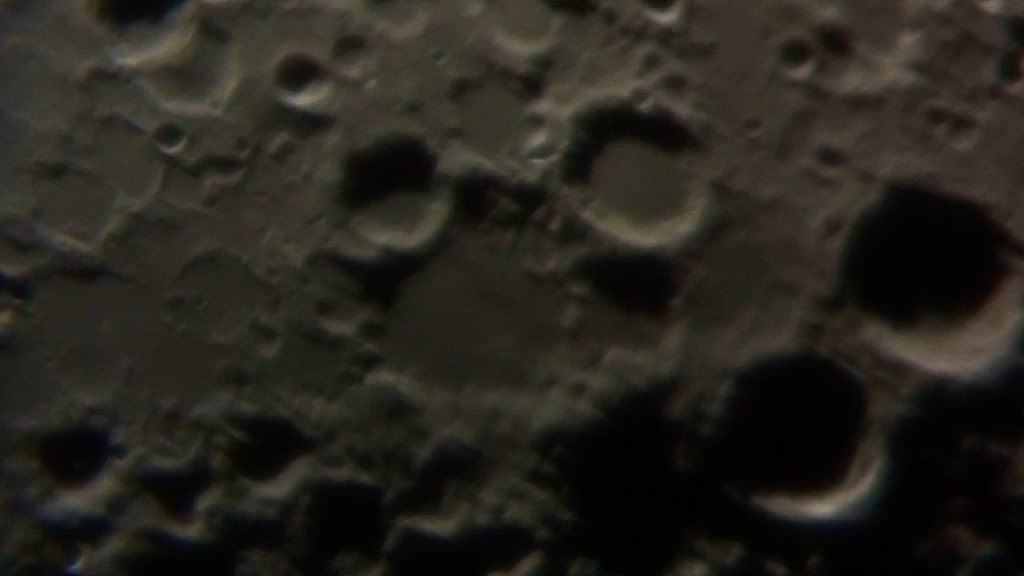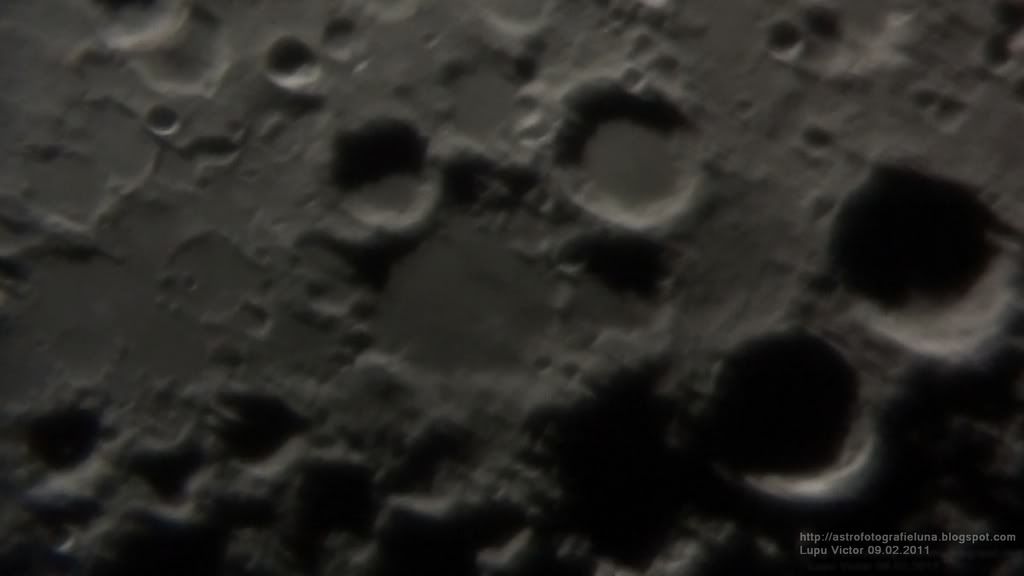Photographer: Victor Lupu
Optics: Celestron C8-Newtonian reflector telescope, 20mm plossl, 2x Barlow
Mount: CG5 (EQ5)
Device: Sony HDR CX105
Filter: No
Date: 09/02/2011
Location: Baia Mare, Romania
Processing: Sony Vegas 10 Registax
Apianus G -center in photo, is a crater which is located a high area in south-central part of the Moon. It is also located on south-west of the crater Aliacensis.The wall has been eroded by subsequent impacts.At east is attached Krusenstern (47 km.) to the outer edge of the crater
Crater Apianus ( not Apianus G we talked about before), is 63 kilometers in diameter and 2080 meters deep.In photo is above and to the right of Apianus G. On the north side see a small crater,called Apianus B, which is a member of a group that includes craters Apianus T and U. Apianus's inner floor is relatively smooth and does not have a central peak, although the floor is formed in somewhat convex shape.The crater dates from Nectariana now 3.92 - 3.85 billion years ago,like all other craters we will talk about.
The name of Apianus crater comes from Petrus Apianus (16.04.1495-21.04.1552), known as Peter Apian, who was a German humanist, known for his work in mathematics, astronomy and cartography.
Aliacensis Crater (80 km.) is a crater which is located in the highlands-in photo is the largest on the right.
The name Aliacensis is after the french geographer and theologian of the 14th century, Pierre d'Ailly.
Werner (70 km.) south-west is Aliacensis in photo.
Optics: Celestron C8-Newtonian reflector telescope, 20mm plossl, 2x Barlow
Mount: CG5 (EQ5)
Device: Sony HDR CX105
Filter: No
Date: 09/02/2011
Location: Baia Mare, Romania
Processing: Sony Vegas 10 Registax
Apianus G -center in photo, is a crater which is located a high area in south-central part of the Moon. It is also located on south-west of the crater Aliacensis.The wall has been eroded by subsequent impacts.At east is attached Krusenstern (47 km.) to the outer edge of the crater
Crater Apianus ( not Apianus G we talked about before), is 63 kilometers in diameter and 2080 meters deep.In photo is above and to the right of Apianus G. On the north side see a small crater,called Apianus B, which is a member of a group that includes craters Apianus T and U. Apianus's inner floor is relatively smooth and does not have a central peak, although the floor is formed in somewhat convex shape.The crater dates from Nectariana now 3.92 - 3.85 billion years ago,like all other craters we will talk about.
The name of Apianus crater comes from Petrus Apianus (16.04.1495-21.04.1552), known as Peter Apian, who was a German humanist, known for his work in mathematics, astronomy and cartography.
Aliacensis Crater (80 km.) is a crater which is located in the highlands-in photo is the largest on the right.
The name Aliacensis is after the french geographer and theologian of the 14th century, Pierre d'Ailly.
Werner (70 km.) south-west is Aliacensis in photo.
The name of the crater comes from Johannes Werner (02.1468-05.1552), a german mathematician and priest in Nuremberg. His work has been in astronomy, mathematics and geography.




 Sunday, March 06, 2011
Sunday, March 06, 2011
 Unknown
Unknown








 Posted in:
Posted in: 


0 comments:
Post a Comment